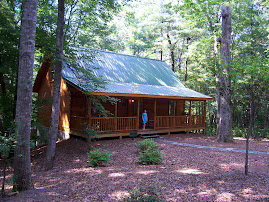
A stone’s throw from the Blue Ridge Parkway, at mile post 180.1, down the road from Meadows of Dan, you’ll find a structure that will take you back in time. Mayberry Presbyterian Church is one of five historic rock churches located in Patrick, Floyd, and Carroll Counties.
The Story
Most people familiar with the Blue Ridge Parkway or southwest Virginia have heard the story of Rev. Bob Childress. He was a Presbyterian minister who lived in the area in the 1920s and 1930s. According to the story, Rev. Childress and his congregation built Mayberry Presbyterian and the other rock churches. The Reverend drove his Ford Model A from one church to the next to lead services on Sunday mornings.
The Church
Mayberry Presbyterian is simply beautiful. Small, clean, neat with an exterior made from rocks. According to the plaque on the front of the church, it was built in 1925 and it’s still home to Sunday services---every Sunday at 9 a.m. In fact, the church is led by Rev. Stewart Childress, the grandson of Rev. Bob Childress. What a cool story!
The quaint church has just 16 rows---eight on each side with an aisle in the middle and the altar in the front. It was designated a Virginia Historic Landmark by the Virginia Department of Historic Resources and placed on the National Register of Historic Places by the U.S. Department of the Interior in 2007.
Not much has changed since it was constructed over 80 years ago. Some security lights have been added. The church has heat and air conditioning now. Additional parking is in the works. When I was there two Saturdays ago, construction equipment had cleared the way for a new parking lot across the street from the church. Now, there’s a gravel parking lot adjacent to the church. Other than the lights it looks pretty much like it did in the 1920s.
Not the Only One
If you like Mayberry Presbyterian, jump back on the Blue Ridge Parkway and you’ll find Bluemont Presbyterian Church just 12 miles down the road at mile post 192. It, too, is one of the historic rock churches built by Rev. Childress.
Gonna Go Back in Time
Just looking at the church makes you feel as though you’ve gone back in time. It’s simple and perfect. The craftsmanship is outstanding. And the story of Reverend Childress and his congregation building the church is remarkable. If you really want the complete experience, take part in the 9 a.m. Sunday service.











